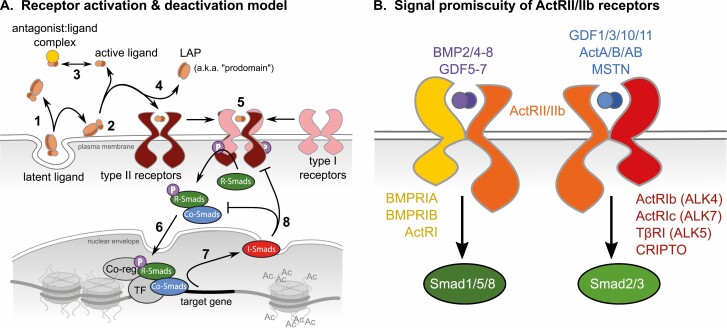Figure 1.
Complexity of the TGF-β superfamily network. (A) General overview of the ligand-mediated signaling pathway starting with (1) secretion of the ligand:latency associated protein (LAP [prodomain]) complex and its association with binding proteins in the extracellular matrix. (2) Cytoskeletal forces and/or proteolysis release the ligand:LAP complex, often dissociating each. (3) Mature ligands are then free to associate with protein antagonists in the extracellular space or in circulation. (4) LAPs are also released with ligand binding to type II receptors followed by recruitment of type I receptors and their transphosphorylation by type II. (5) The serine kinase domain of type 1 receptors then phosphorylates receptor (R)-Smads that then bind Co-Smads allowing for (6) nuclear translocation, binding of transcription factors (TF) and coregulators and ultimately, (7) gene transactivation. (8) Inhibitory (I)-Smads are among the target genes and attenuate both receptor activation and Co-Smad complex formation. (B) Color-coding indicates the different ligands (purple and blue) that bind ActRII/IIb type II receptors (orange) that associate with different type I receptors (yellow and red) to separately activate distinct Smad signaling pathways.

